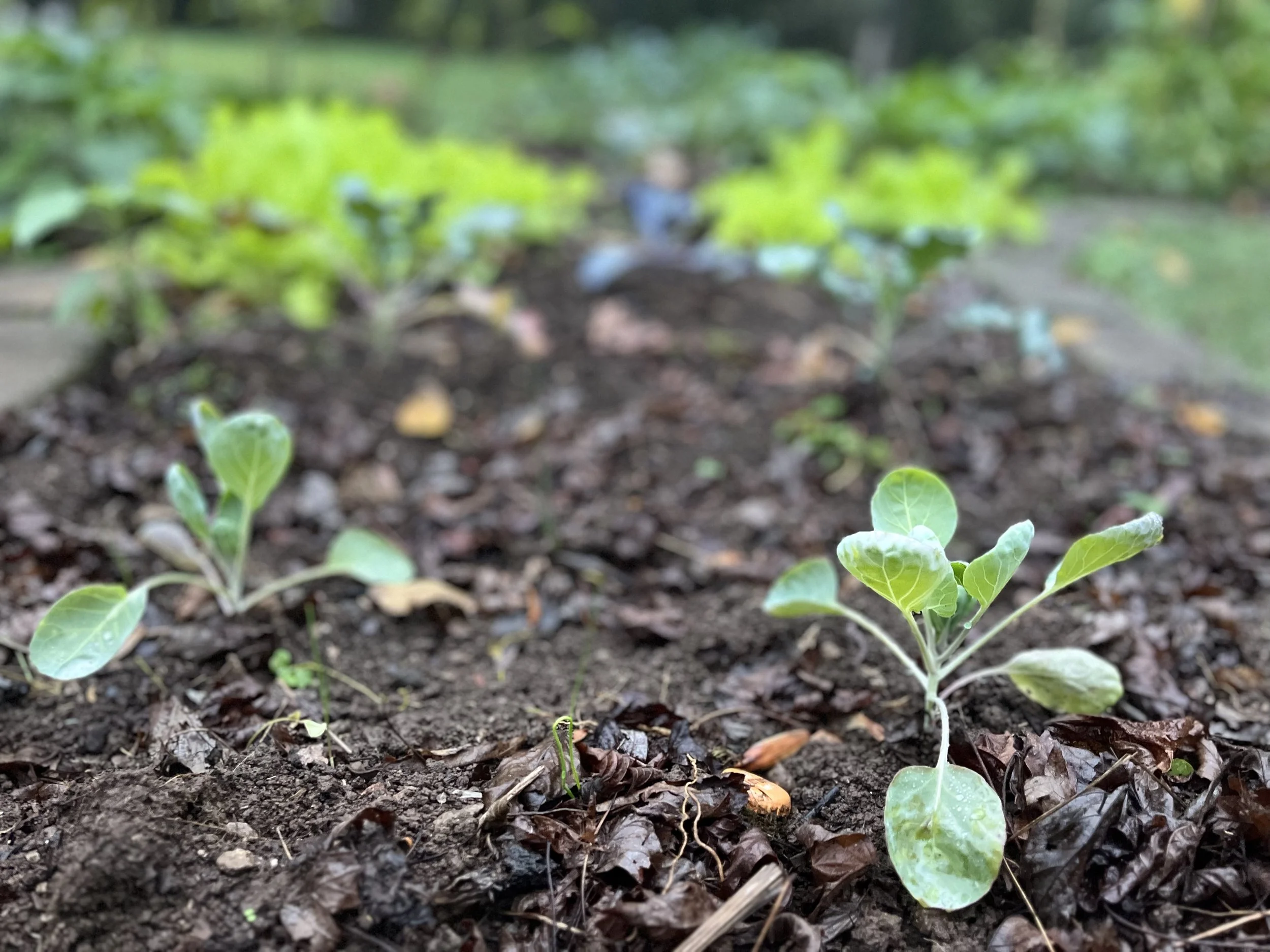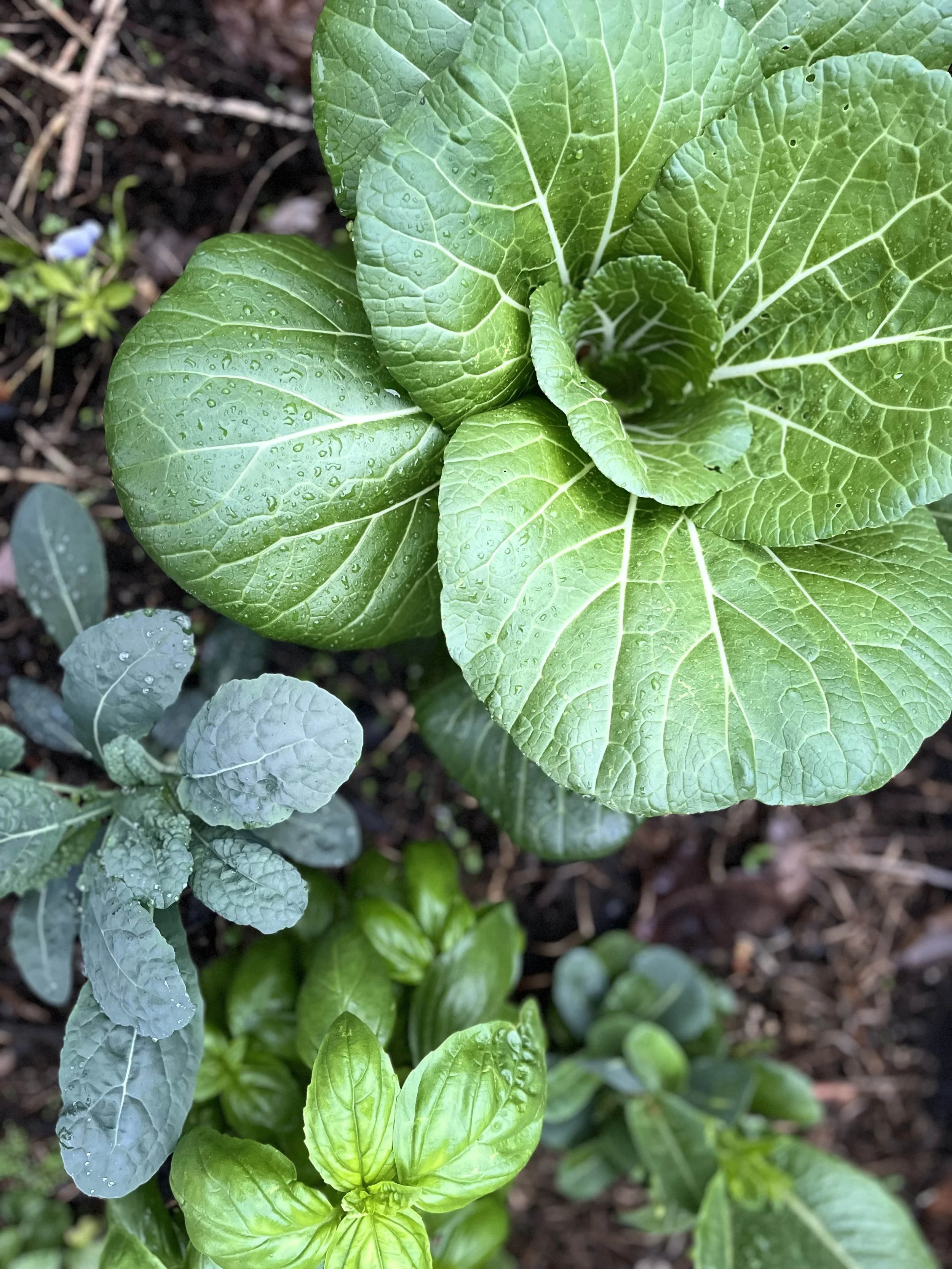Fall Planting For Anyone
By: Caroline Rupard
Plant, tend, harvest. It’s a natural cycle present in our jobs, our relationships, and the growing of our children. Though we commonly garden for nourishment, the garden has historically been a place of parables and life lessons. The benefits of gardening far outweigh the harvest found in our kitchens. There’s much to be learned from time in the garden.
Even though convincing my toddler to eat vegetables these days is a battle, he still walks with me to the garden every day and sees the reward from our labor. It seems there’s nothing more thrilling to him than pulling radishes, cutting okra, and hunting for green beans.
When most people think of gardens, they think of a summer garden – tomatoes, peppers, corn, squash, green beans. It’s a great time of year to garden. But there’s another garden season out there that is definitely worth a try.
The fall and spring gardens are my favorite. Perhaps because they are less known (I do love an under-dog), but most likely because some of my favorite vegetables are grown in the fall and spring. These garden seasons also seem to be easier to grow.
We are in Zone 7 (Tennessee). Growing up in Zone 8 (Mississippi), a fall and spring garden is much more common. But a Zone 7 fall garden is not only do-able but could be a successful garden for you. If you don’t know your Plant Hardiness Zone, find your
location on this map: https://planthardiness.ars.usda.gov/
Here’s what you need to know when it comes to a fall garden. *note that the fall and spring gardens are essentially the same. These notes can be applied to the spring garden starting end of February / early March in zone 7.
Some of the most common fall vegetables include:
Kale
Spinach
Lettuce (all varieties)
Arugula
Carrots
Garlic
Cabbage
Collard, Mustard, Turnip Greens
Radishes
Brussel Sprouts
Broccoli
Cauliflower
Bok Choy
Swiss Chard
There are two ways to plant these: Seedling vs. Seed
Essentially, all plants can be planted by seed. But if you don’t have a greenhouse, some plants grow so slowly that you would miss the actual growing window waiting on the seed to develop. That’s why some are just better to buy as seedlings at a local nursery.
A seedling is a small plant about the size of your hand.
Best as Seedlings:
Cabbage
Collard Greens
Brussel Sprouts
Broccoli
Cauliflower
Bok Choy
Kale
Best as Seeds:
Spinach
Lettuce
Carrots
Garlic (cloves)
Mustard and Turnip Greens
Radishes
Swiss Chard
Anything you plant by seed can be planted as a seedling; these suggestions will only be more cost efficient.
If you are a new gardener, my suggestion would be to start with lettuce or kale this fall. The main threat to a fall garden is freezing temperatures. A frost is only dangerous to new fall plants – seedlings. If seedlings are in the ground when a frost is predicted, you should plan to cover them with a sheet or light blanket (never plastic!) to protect them during the night.
Once a fall plant is established, these plants are able persist in freezing temperatures without covering. If your fall plants are in pots, you will need to bring them inside or heavily protect them outside since they are more exposed being above ground.
Though most of us aren’t dependent on our garden produce to get us through the coldest months, there’s something about the one last effort of fall to fill our kitchens with fresh food from the garden before hunkering down for the winter.
Whether it’s spring, summer, or fall, a large raised-bed garden or a simple pot of lettuce on your driveway, your efforts as a gardener will not be lost. Hands in the dirt is a healing experience. You encounter healthy bacteria the body needs and find grounding through the act.
During harvest time, we find relief going to the yard rather than the grocery store to get vegetables for our family. In the store, how do we know how long those vegetables have traveled, how long ago they were harvested, and how many chemicals have helped them maintain the “fresh” look?
Waiting on a seed to grow into something we can eat causes us to relearn the practice of patience in an often-automatic world. Even failure in the garden is a necessary experience for each of us. Produce is just one of the gifts we receive from a garden.
“The glory of gardening: hands in the dirt, head in the sun, heart with nature. To nurture a garden is to feed not just on the body, but the soul.” – Alfred Austin
Caroline
The Southern Belle Pepper


